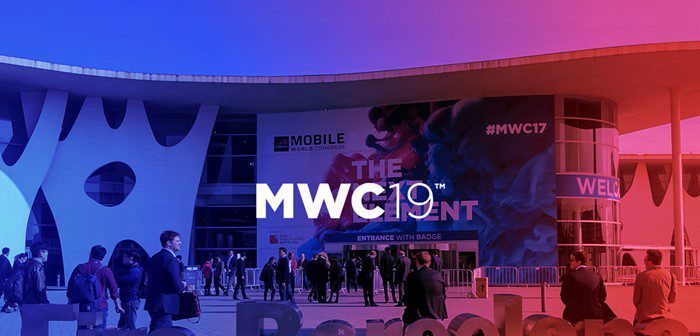I’m just back from one of my favourite cities, Barcelona, where I attended the Mobile World Congress (MWC). It was a great opportunity to see what the future looks like for our most used and prized possession…
This was my first time attending MWC and my overriding first impression was that it is massive, not only in its importance to the global technology industry but in a physical sense; the Gran Fira is huge. Hence these big numbers…
- 109,000 attendees from 198 countries
- 120,000sq metres, covering eight halls of exhibitor stands
- 2,400 companies exhibiting
- 50,000 Cameron steps in two days
Intelligent Connectivity
The MWC website stated that attendees are invited to explore the era of Intelligent Connectivity; the overarching theme of MWC’s 2019 events that they describe as the powerful combination of flexible, high-speed 5G networks, IoT, AI and big data. Intelligent Connectivity marks the beginning of a new era according to MWC, defined by highly contextualised and personalised experiences, delivered as and when you want them. The premise is that they it will shape the future of our industry and our world as new innovations intelligently connect everything and everyone to a better future. With quite a bold statement, I had ensured I had done my preparation before heading out to maximise my time. After looking at all the seminars, technology providers and clients who would be there, my plan of attack split my two days into very different agendas.
Day 1 was getting my bearings after discovering the small city-sized event that faced me. I decided that my first day was going to be focused on the big shiny things that MWC had to offer…
The 5G game-changer
Without a doubt, the biggest and shiniest of them all was 5G. Pretty much every single stand had a reference to 5G in one way or another, making it very much omnipresent across the whole event. Whether it was the companies leading its development and building its infrastructure in Qualcomm and Arm, to the huge global handset manufacturers such as Huawei, Samsung, Sony and ZTE who were all plugging how awesome your 5G connected phone will be. After talking to a few people across a number of exhibitors, there was very much a perception and reality lens that needs to be applied to 5G at present. When 5G arrives, and this is where the reality lens is needed, as whilst 2020 is talked about, 2021 and beyond look more likely to deliver its full potential which depending on where you read it will deliver speeds 100-1000 times faster than 4G is currently.
Where 5G will really achieve its billing of intelligent connectivity is in its latency, which is how long the network takes to respond to a request. The most obvious demonstration of this is how long will it take to download a film. GSMA quote the following: In 2001, 3G would download your film in 26 hours. In 2003 on G4 it would be 6 mins and in 2020 with 5G it will be 3.6 seconds.
With every 5G sign, there was an AI one not very far behind. The applications of AI and machine learning were as extensive as they were varied. From Microsoft AI transforming the world of farming to spending five mins watching two robots play the piano and drums in front of me, and my realisation that I was clapping my appreciation to two machines.
Data is staying strong
Day two I focused on what I could bring back to help in my day-to-day role. Having Daimler as a new client to OMD UK, I was very interested to see its exhibition stand and what they were focusing on. They obviously had two lovely cars – the CLAc coupe and EQC – which was a further reminder that my 16-year-old Golf could do with an upgrade. But more interestingly it was all about connectivity and data for them as a company. I attended a brilliant talk with Guido Vetter (Head of Corporate Center of Excellence Advanced Analytics and Big Data) and Sanjay Ravi (General Manager: Automotive Industry, Microsoft Corp) about how their new partnership uses Microsoft Azure to bring Artificial Intelligence and data-driven innovation to life at Daimler.
Another area of interest on day two was measurement and attribution in the mobile space. Hall 8.1 was entirely centred around mobile applications, from the building of them to understand how they are delivering business outcomes. I talked to a number of the key players in the market including Ogury, Appflyer and Kochova, which as a planning geek seeing the levels of actionable information that these platforms provide is really exciting. I know from our own client work on McDonald’s and Betway that having access to the app and mobile web attribution and measurement insights are very much fuelling our planning outputs and activation strategies. The demonstration by Ogury of their Insights Hub platform got me thinking about lots of hypothesis and challenges we could start to dig deeper into for our clients.
So, after a couple of days of seeing into the future and realising I definitely need to upgrade my 6S iPhone, my overriding conclusion is that the speed and changes in technology are only going to increase. The possibilities that 5G will enable in the future will be ‘game-changing’ and the applications that AI will enable haven’t had their surface scratched yet. From an addressable planning perspective, I’m really excited about having access to platforms that enable rich data sources and how these can be used to enrich planning insights and deliver personalisation at scale that achieves strong business results for our clients.
But If I had to hang my hat on what I’m most excited about there is a clear winner. The 5G handset that is going to banish my buffer face on the 7.29am train into Waterloo…




